 |
|
|
|
In the Forums... |

First Impressions
For those old enough and perhaps keen enough in IT to remember the old days in computing, the packaging CPU coolers came in was even smaller than a packet of cigarettes. Amanda has much greater requirements and therefore comes in an attractive large box more or less shaped as a cube. Inside we find an accessories box and of course the cooler itself. The latter is large, uses a heat pipe design and features two 92x92x32 fans, one for blowing air into the cooler and one for blowing air out. The heatsink component is mostly aluminum but also houses a less visible copper base. The utmost interesting observation to make however is that Amanda doesn't just blow air to lower temperatures but rather uses what Titan has called a TEC or Thermal Electronic Chip. Most people are rather more familiar with the term, a peltier unit. As a quick recap about what a peltier is, this is a flat eletric powered surface which on one side gets very cool while on the other very hot. Between its two flat surfaces is a series of thermocouples. To understand this one must go back to 1821 when J. Seeback discovered that if two different metals are connected at two separate junctions (points), then this will develop a micro-voltage providing these points are maintained at different temperatures. A peltier is in effect the inverse of this and was first discovered by J. Peltier (hence the name) in 1934. In essence, if one applies a voltage to the thermocouple (essentially the join between the two metals) then the end result will be a substantial temperature delta between the two points (i.e. side A and side B). A peltier unit today is usually made up of one level containing many such thermocouples aligned in the shape of a square or rectangle though multi-level peltiers are possible to further enhance performance at the cost of power usage - more on the latter later. What's all this mean in plain English? Amanda houses a peltier that closely attaches to the CPU heat spreader on side A while Side B is equally firmly connected to the large aluminum heatsink via a copper base away from view, this is inserted between peltier and heatsink. The cool side attaches to the CPU while the hot side is directly connected to the heatsink so heat can be quickly extracted.
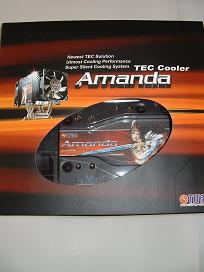
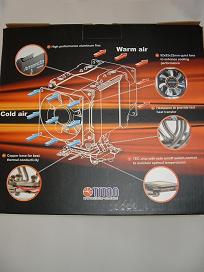
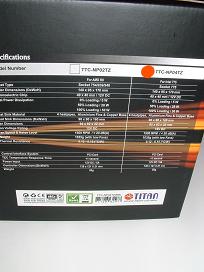
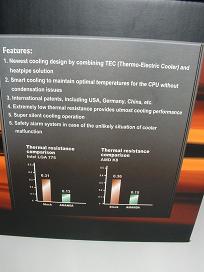 Click images to enlarge. For Amanda, Titan has used a peltier which is so integrated into the whole CPU cooler design that knowing its complete specifications is somewhat beyond reach. Titan unfortunately doesn’t disclose these details but not all is lost. What we managed to get from Titan is as follows. The peltier max power usage is 5Amps, it uses the +12V rail, is 40x40mm in size, and baring in mind other PC components, is recommended for use with a PSU rated at no less than 350W. In terms of the PSU it's probably much more accurate to look at your system power requirements and then evaluate your PSU's combined Amps output. For example, if your PSU is somewhat older bought back when most PC components were still powered from the +5V rail and your system is already stocked up using a recent processor, graphics card etc. then a further 5Amps on the +12V might be pushing it a step too far. Your PSU in such case might support anywhere between 18-25A on the +12V rail. Also, bare in mind that just because your PSU states to support 22A @ 12V doesn't mean you should opt for anywhere near this amount. The true power your PSU can deliver at 12V is fundamentally down to a) how much power draw your system needs at 3.3V and 5V, and b) the effects of power loss due to such occurrences like white noise and material resistance (PSU efficiency). In practice your PSU may thus only really support up to 15-18A. Should you be the proud owner of a more recent PSU then the chances are it has plenty power to drive Amanda and beyond.


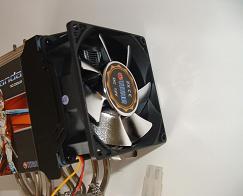
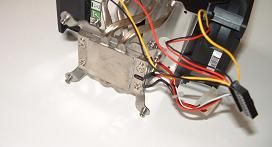 Click images to enlarge. Titan sent us the Socket 775 model but AMD users will be happy to know a socket 754/949/940 is also available. Furthermore, an AM2 version is planned in the foreseeable future. For those who admire flashing LEDs all striking for your affection Amanda will disappoint, she's already married to the peltier. Should you however belong to a different crowd that goes for that more elegant look then here is where Amanda delivers. Her black casing and overall sustained presence yield what may be argued as a professional looking cooler, especially if one considers some of the other vibrant designs by Titan and others. The only real gripe one may have surrounds the lack of 92mm fan guards on each fan, a facet which would prevent any loose cables ever entering the blades. One plausible explanation why Titan hasn't included these is due to how the weight reduction system connects between your case and Amanda, the wire feeds through one of the fan screw holes. With this said, it's still perfectly possible to buy your own fan guards (ideally in black with same color screws) and perform a little in-house DIY.

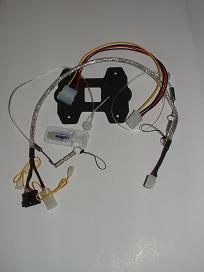
 Click images to enlarge. Amanda's heatsink has a thermal resistance in the region of 0.12-0.15(C/W), which as shown later largely explains her cooling capability. What's this mean in practice? In theory this means for every Watt of heat produced by the CPU and thus passed through Amanda's heatsink, the CPU heat as that operational within the system (i.e. PC) will be equal to 0.12-0.15C. In practice there are some other finer points such as the conductivity of air (hence why the use of thermal compound between CPU heat spreader and the heatsink) but overall this means for a CPU producing 150W of heat (i.e. a lot), the dissipated CPU heat would be 150-(0.12[0.15] x150) = 128/132W while only 18/22.5W of heat would be retained by the aluminum heatsink. For comparison, a good air cooler might have a thermal resistance of 0.27C/W which translates into 150-(0.27x150) = 109.5W of dissipated heat and 40.5W remaining. The higher the thermal resistance, the more likely the heatsink is to heat up by holding heat for longer, the likeliness increases depending on the CPU used or also, the voltage that the CPU is set to run at. Having taken a closer first look at Amanda's performance, what's the bottom line? We can answer this two ways - Amanda can either be used to keep a lower end/cooler processor running at absolute low temperatures (around 20C) or alternatively, to ensure high-end/hot processors run at most around 30-40C. On paper Amanda seems to have the might required to performing either but of course, we'll be putting her to the test with a high-end hot CPU very shortly. Just how good is her marriage with the peltier?
Total Power Dissipation:
0% Loading / 5w
Heat Sink Material: 4 heat pipes, Aluminum Fins & Copper Base
Control Interface System: PCI Card
|
||
|
| |||
|---|---|---|---|
